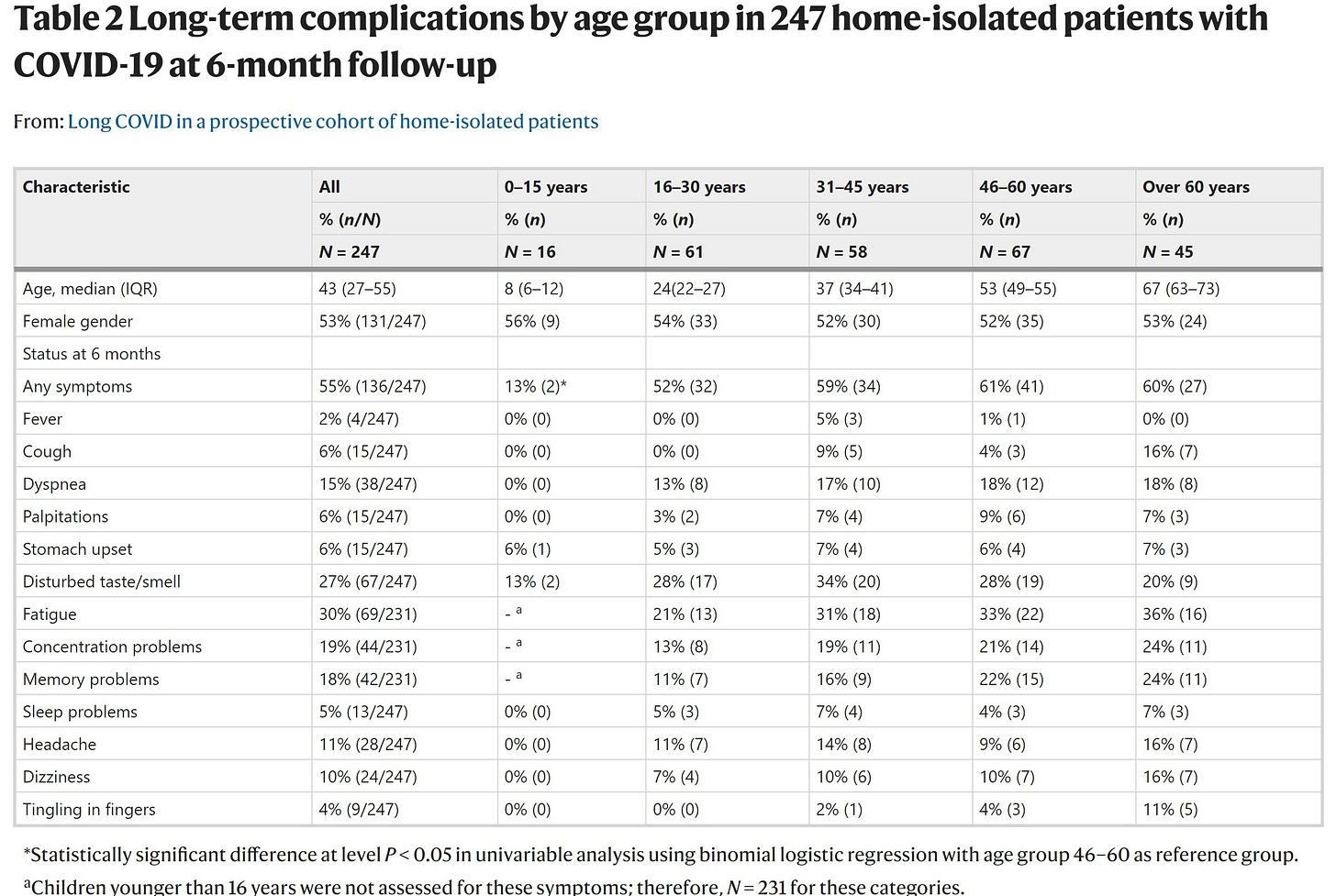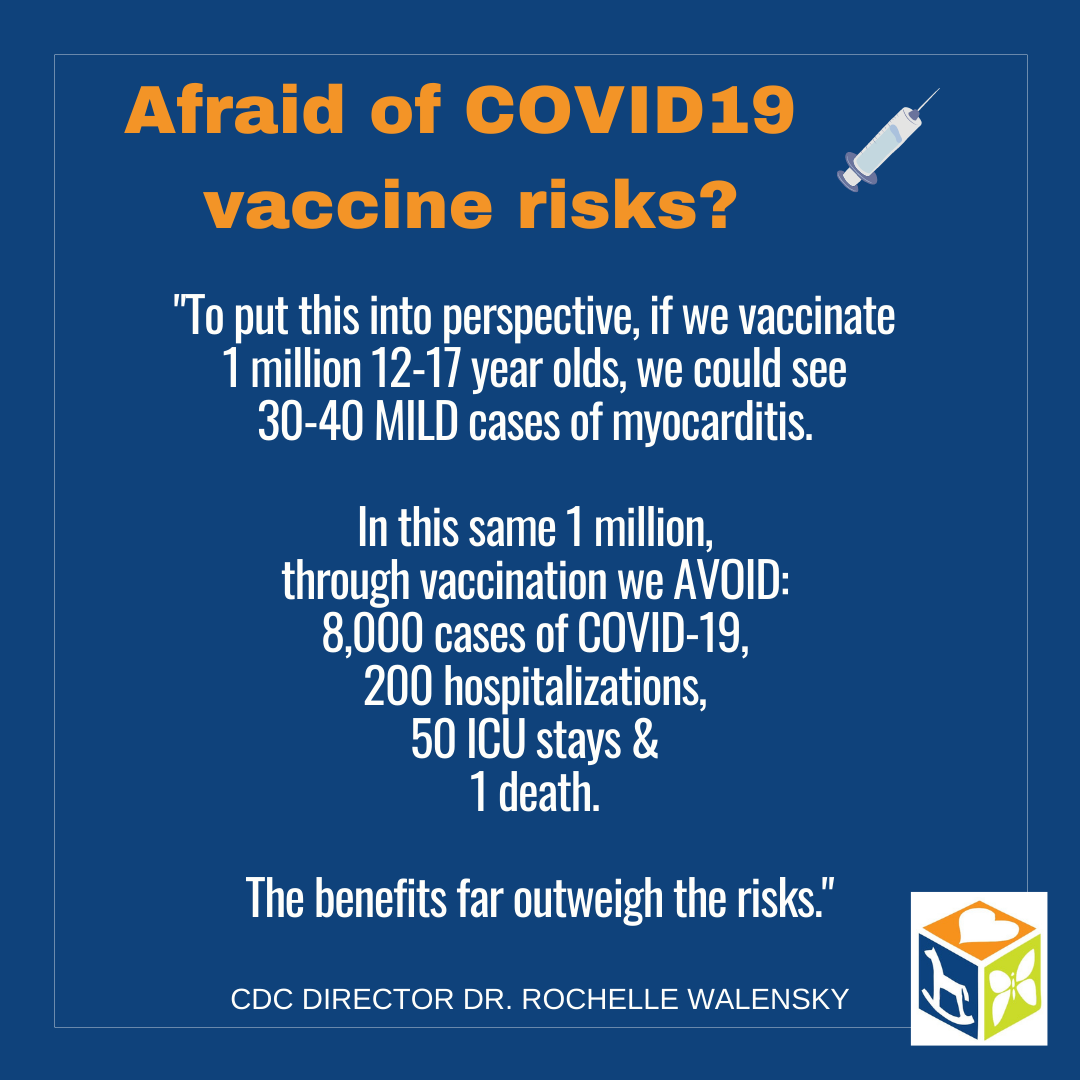I’ve seen many kids over the past year that have new onset of various symptoms that I suspect are due to long COVID19, but this is an area that is not well understood. There is little data on adults with long COVID symptoms and even less in children.
Offering advice when so little is known is hard. I feel like I’m banging my head against a wall to alert families that there is risk. So many now are throwing caution to the wind and just “living life” because they know people who have had COVID and “it was just a cold.”
Is it mild?
Although most kids seem to have mild infections, studies are suggesting that they can develop symptoms that persist months after initial COVID19 infection.
We understand so little about this virus and its long term complications.
It is known, for example, that the virus that causes chicken pox seems to go away but then comes back years later as shingles. Some viruses (hepatitis B and C, Epstein Barr, Human Papilloma Virus) cause cancer years after the initial infection. Measles can seem to completely resolve, only to kill someone years later when they develop SSPE.
There is no long term data to look at to decide our true risks of COVID19. This makes it important to prevent every case because we don’t know if it will be a mild case or if it will show up years from now with cardiovascular, neurologic or other complications.
A Norwegian study
Long COVID in a prospective cohort of home-isolated patients reports a significant portion of people with mild COVID infections in various age groups with persistent symptoms over a period of 6 months. Older patients and those with pre-existing lung conditions (such as asthma) were the most likely to have chronic symptoms.
From their study:
Symptoms vary, but the most common in the age groups representing kids and teens are fatigue, shortness of breath (dyspnea), concentration/memory problems and changes in smell/taste. The 0-15 year group is very small, which gives limited data. I suspect a larger study would identify more long term issues - especially stomach issues, but the studies have yet to be seen.
The older teen and adult groups are better represented but I’d love to see more studies with larger numbers of children and teens broken into smaller age ranges.
Unfortunately as more kids get infected, these studies will be possible.
What is long COVID?
Symptoms of long COVID were first thought to include fatigue, muscle and joint pain, headache, insomnia, respiratory problems and heart palpitations.
Now there are suggestions that there may be many more symptoms. These include a variety of gastrointestinal problems, lack of taste/smell (or change in taste/smell), dizziness, seizures, hallucinations and testicular pain. I’ve heard of people who blame sudden and persistent hair loss on long COVID.
How is it identified?
To my knowledge, there is no blood or imaging test to verify long COVID.
A history of symptoms and progression of findings over time are used to identify long COVID.
Some cases are only presumed because initial testing was never done. Initially this was because testing was scarce. Now testing for active infection is readily available, but often declined. (Side note: Get tested if you have symptoms or exposure!)
How is it treated?
Symptomatic treatment is a mainstay for any medical symptom, but there are long COVID clinics opening across the country to help treat as they research the condition further.
I’ve heard that some long hauler symptoms improve with the COVID19 vaccines, so if you’re suffering and over 12 years, get vaccinated. There’s minimal risk and the benefits might be great. Plus, you’ll be following the standard recommendations.
These symptoms can impact the day to day life in many ways, depending upon the symptom. Imagine how difficult it is for a former athletic teen to have easy fatigue or an academically talented student with persistent brain fog to go about their usual activities. There are kids who are at risk of nutritional problems because food tastes bad. For these reasons, working with a therapist can be helpful. It is not “in their head” but the stress of changes to daily life need to be addressed and managed.
In the KC Metro, the University of Kansas Medical Center has a post-acute and chronic COVID clinic staffed by a variety of medical specialists. If you’re not in this area, look for a clinic near you.
I hope that as more people are identified and evaluated in these clinics, research will show better treatments.
My take?
This is the rant I repeat often but feel like I’m hitting my head against a wall. Excuse me if I sound like I’m going against your freedoms - I’m just trying to protect the vulnerable.
The best way to treat any infection is to prevent it in the first place.
There are many people who have not yet been infected. We need to do everything we can to keep them from getting infected.
I fear that too many kids and families are taking risks that they will regret. Some of these risks are in their control, such as going to places unprotected while the local COVID numbers are rising. Other risks are not in their control, such as the community members acting as if nothing is wrong and going everyone unmasked, allowing these increase in cases.
We must stop the spread of COVID19.
Every time it is shared, it has the opportunity to mutate. We have no idea what the next variant can do. At this point the Delta variant is scary enough.
Vaccinate yourself as soon as you’re able.
This is today if you’re in the US. There are very few medical contraindications to getting vaccinated. You should not be vaccinated if you have:
• had a severe allergic reaction after a previous dose of this vaccine.
• had a severe allergic reaction to any ingredient of this vaccine.
That’s the full list. Everyone else over the age of 12 years in the US is eligible.
The vaccine is widely available and the risk of getting infected is increasing each day.
Vaccinate your children as soon as they’re eligible.
At this point every child over 12 years of age is eligible in the US.
It’s currently expected that younger children will be eligible this winter. Until then they’re relying on the rest of the community to help them out.
If you’re worried about the risks of the vaccine, consider the risks of not vaccinating. The vaccine is much safer.
I know this quote doesn’t address other safety concerns, but I covered those here.
Use masks correctly.
It’s not that hard to wear a mask. Seriously.
I’ve worn two masks plus a face shield for much of this pandemic. Despite being fully vaccinated, I’ve never stopped wearing a mask in public buildings. I have asthma, so please don’t tell me that is a reason to not wear one.
Masks should remain over the nose and mouth at all times unless eating or drinking.
If you must adjust your mask, wash or sanitize your hands before and after. If this must be done frequently, you need a better fitting mask.
If kids are too young to safely wear a mask or won’t keep them over their nose and mouth, don’t bring them to areas where they are at risk unnecessarily. This means a trip to the store, church/mosque/synagogue/temple, restaurants, indoor activity center, or theater. Stop visiting homes unless everyone else is vaccinated.
Wearing a mask shows respect and kindness to others. Be kind.
Get tested.
I’ve seen so many parents decline testing for their kids in recent weeks. This is not helpful to anyone.
Knowledge is power.
If the test is positive, you can isolate properly, notify contacts, and watch for long haul symptoms.
Yes, it is possible that the test can be falsely negative. A retest might be needed if symptoms are suspicious or there is a known exposure. Having several negative tests does not decrease the risk of it being COVID19 with this exposure or symptoms.
Even being fully vaccinated does not eliminate the potential of symptoms being COVID19. The vaccine prevents serious infections leading to hospitalizations. Vaccinated people can still become infected and spread to vulnerable people. Testing can help you protect others.
Community rates can be best tracked when tests are done when indicated. This helps everyone assess their risks better.
Where exposures happen.
This is where I see a difference with families who have all vaccinated members and those who still have household members who are not fully vaccinated. If everyone is vaccinated, they are much less likely to have significant complications from an infection. They can do more things, but should still wear masks as an added layer of protection.
Areas with low spread are also safer. But if there are rising levels of COVID19 cases (which is most of the US right now) more precautions must be taken.
I recommend avoiding non-essential travel and indoor areas for those families who have household members who are not fully vaccinated when local risks are high. Again, these include trips to the store, church/mosque/synagogue/temple, restaurants, indoor activity centers, theaters and more. Stop visiting homes unless everyone else is vaccinated. Postpone that trip that your family planned.
But what about the places your children need to go?
Ask what measures your child’s daycare/camp/studio/team is doing to limit exposures as our community rates are rising.
How many of their staff are vaccinated?
Do they require masks?
Are they enforcing not returning until after a quarantine period is complete with symptoms or exposure?
Do they require PCR test results if someone’s been sick?
If they’re indoors, what have they done to optimize ventilation?
We’re seeing more kids getting exposed because safety precautions have loosened. Please ask that they tighten them up.
Show restraint in choosing activities.
None of us wants to go back to full lock down mode, but we can look at risks to help choose the best activities for us.
Limit non-essential indoor activities so we can keep kids in school and daycare and so teens and adults can work safely.
Encourage socialization and exercise in safer environments with masks and good ventilation.
If rates are rising, reconsider your travel plans. (Get travel insurance so you can cancel your trip and not pay penalties.)
Your Local Epidemiologist has a great post on looking at risks and your family’s risk tolerance: Navigating kid-related activities by COVID-19 risk tolerance level.
Resources:
Long COVID in a prospective cohort of home-isolated patients https://www.nature.com/articles/s41591-021-01433-3
Children with long covid doi: 10.1016/S0262-4079(21)00303-1
Attributes and predictors of Long-COVID: analysis of COVID cases and their symptoms collected by the Covid Symptoms Study App (preprint) https://www.medrxiv.org/content/10.1101/2020.10.19.20214494v2
Neurological issues in children with COVID-19 https://doi.org/10.1016/j.neulet.2020.135567
Neuroimaging manifestations in children with SARS-CoV-2 infection: a multinational, multicentre collaborative study https://pubmed.ncbi.nlm.nih.gov/33338439/
Brain imaging before and after COVID-19 in UK Biobank https://www.medrxiv.org/content/10.1101/2021.06.11.21258690v2
Coronavirus Infections in the Nervous System of Children: A Scoping Review Making the Case for Long-Term Neurodevelopmental Surveillance https://www.pedneur.com/article/S0887-8994(21)00008-4/fulltext
Long COVID afflicts kids too. Here's what we know so far. https://www.nationalgeographic.com/science/article/long-covid-afflicts-kids-too-heres-what-we-know-so-far
New Long-Haul COVID Clinics Treat Mysterious and Ongoing Symptoms https://www.scientificamerican.com/article/new-long-haul-covid-clinics-treat-mysterious-and-ongoing-symptoms/
Unvaccinated? Here is what it’s like to have ‘MILD’ COVID & Long Haulers. https://schachin.medium.com/unvaccinated-here-is-what-its-like-to-have-mild-covid-d258cbff6070
CARING for Children with COVID https://caring4kidswithcovid.nih.gov/







